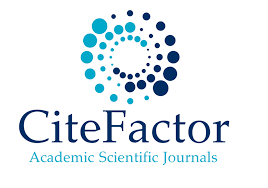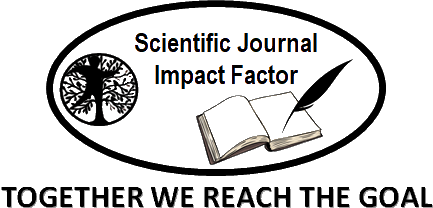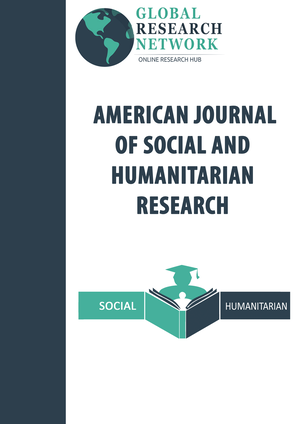Energy Transition Planning Modeling at Power Plants Using Renewable Energy in South Sumatra 2023-2040: Business as Usual (BaU) Scenario Using Low Emission Analysis Platform (LEAP) Software
Abstract
Abstract —This study aims to model the energy transition planning in power plants in South Sumatra using renewable energy from 2023 to 2040 with a Business as Usual (BaU) scenario using the Low Emission Analysis Platform (LEAP) software. This analysis uses macroeconomic assumptions, population growth, and energy demand based on the latest data from the Central Statistics Agency and PLN's Electricity Statistics. Using the LEAP model, this study projects the primary and final energy needs for major sectors such as industry, transportation, households, and others. The results indicate that without new policies, energy demand will continue to increase, driving the need to adopt renewable energy technologies to ensure sustainable energy supply. This study provides insights into the importance of effective energy policies and technological innovations to meet increasing energy needs while reducing emissions and enhancing energy security in South Sumatra.
Keywords
Full Text:
PDFReferences
E. Hilmawan, I. Fitriana, and A. Sugiyono, “Outlook Energi Indonesia 2021,” 2021.
Perda Sumsel Perda No 4 Tahun 2020 Tentang Rencana Umum Energi Daerah Provinsi Sumatera Selatan 2020‐ 2050., Perda Sumsel. Indonesia, 2020.
Dirjen Migas KESDM, “STATISTIK Minyak dan Gas Bumi STATISTICS Oil and Gas Semester I 2021 Directorate General of Oil and Gas Ministry of Energy and Mineral Resources,” 2021.
PTBA, “Bukit Asam Mulai Bangun PLTU Sumsel 8 Awal 2018.,” 2017.
CNBC, “Siap‐Siap, PLTU ‘Raksasa’ Sumsel Bakal Beroperasi di 2023.”
BPS Sumatera Selatan, “Provinsi Sumatera Selatan Dalam Angka 2024,” Palembang, 2024.
Badan Pusat Statistik (BPS), “Statistik Indonesia Dalam Infografis 2022,” 2022.
C. G. Heaps, “Low Emissions Analysis Platform Training Exercises,” 2020. [Online]. Available: https://leap.sei.orghttps//www.sei.org
PT. PLN, “Statistik PLN,” 2023.
Q. Hassan et al., “The renewable energy role in the global energy Transformations,” Renew. Energy Focus , vol. 48, Mar. 2024, doi: 10.1016/j.ref.2024.100545.
M. Dada and P. Popoola, “Recent advances in solar photovoltaic materials and systems for energy storage applications: a review,” Dec. 01, 2023, Springer Science and Business Media Deutschland GmbH. doi: 10.1186/s43088-023-00405-5.
H. Hou, W. Lu, B. Liu, Z. Hassanein, H. Mahmood, and S. Khalid, “Exploring the Role of Fossil Fuels and Renewable Energy in Determining Environmental Sustainability: Evidence from OECD Countries,” Sustain., vol. 15, no. 3, Feb. 2023, doi: 10.3390/su15032048.
PT PLN, “RUPTL 2021-2030,” 2021.
S. Huang, C. Du, X. Jin, D. Zhang, S. Wen, and Z. Jia, “The Impact of Carbon Emission Trading on Renewable Energy: A Comparative Analysis Based on the CGE Model,” Sustain., vol. 15, no. 16, Aug. 2023, doi: 10.3390/su151612649.
BPS - Statistics Indonesia, “statistik-indonesia-2020,” 2020.
K. Zhou, J. Yang, H. Yin, and T. Ding, “Multi-scenario reduction pathways and decoupling analysis of China’s sectoral carbon emissions,” iScience, vol. 26, no. 12, Dec. 2023, doi: 10.1016/j.isci.2023.108404.
K. Handayani, P. Anugrah, F. Goembira, I. Overland, B. Suryadi, and A. Swandaru, “Moving beyond the NDCs: ASEAN pathways to a net-zero emissions power sector in 2050,” Appl. Energy, vol. 311, Apr. 2022, doi: 10.1016/j.apenergy.2022.118580.
A. B. Setyowati, “Mitigating inequality with emissions? Exploring energy justice and financing transitions to low carbon energy in Indonesia,” Energy Res. Soc. Sci., vol. 71, Jan. 2021, doi: 10.1016/j.erss.2020.101817.
IRENA, RENEWABLE CAPACITY STATISTICS 2020. International Renewable Energy Agency (IRENA), 2020. [Online]. Available: www.irena.org
L. Malka, F. Bidaj, A. Kuriqi, A. Jaku, R. Roçi, and A. Gebremedhin, “Energy system analysis with a focus on future energy demand projections: The case of Norway,” Energy, vol. 272, Jun. 2023, doi: 10.1016/j.energy.2023.127107.
E. Nur’aini, I. N. Darmawan, and M. A. Rayesa, “Long Term Projection of Electricity ... (Etika Nur’aini, et al.) LONG TERM PROJECTION OF ELECTRICITY GENERATION SECTOR IN WEST PAPUA PROVINCE: LEAP MODEL APPLICATION,” 2020. [Online]. Available: http://journal.ugm.ac.id/index.php/ajse51
L. Sani, D. Khatiwada, F. Harahap, and S. Silveira, “Decarbonization pathways for the power sector in Sumatra, Indonesia,” Oct. 01, 2021, Elsevier Ltd. doi: 10.1016/j.rser.2021.111507.
National Energy Council, “Indonesia Energy Outlook 2016 ,” 2016.
D. A. Zaman and C. Yong, “CAPACITY BUILDING ON DEVELOPING SDG 7 ROADMAP USING NATIONAL EXPERT SDG TOOL FOR ENERGY PLANNING,” 2021.
T. Nacht et al., “Modeling Approaches for Residential Energy Consumption: A Literature Review,” Sep. 01, 2023, Multidisciplinary Digital Publishing Institute (MDPI). doi: 10.3390/cli11090184.
DOI: http://dx.doi.org/10.52155/ijpsat.v48.1.6838
Refbacks
- There are currently no refbacks.
Copyright (c) 2024 ARANANDA DWI PUTRI, Nugroho Adi Sasongko, Donny Yoesgiantoro

This work is licensed under a Creative Commons Attribution 4.0 International License.




















